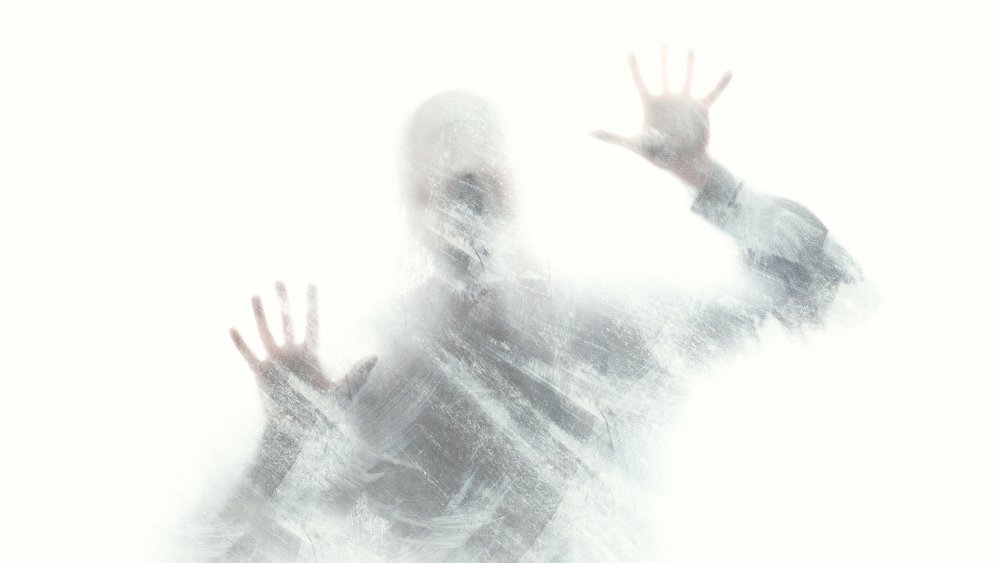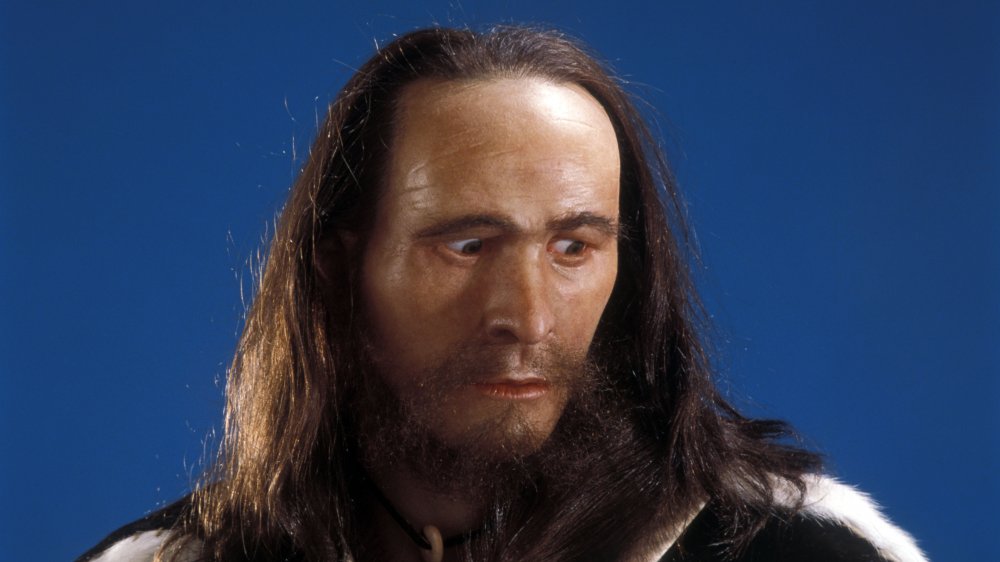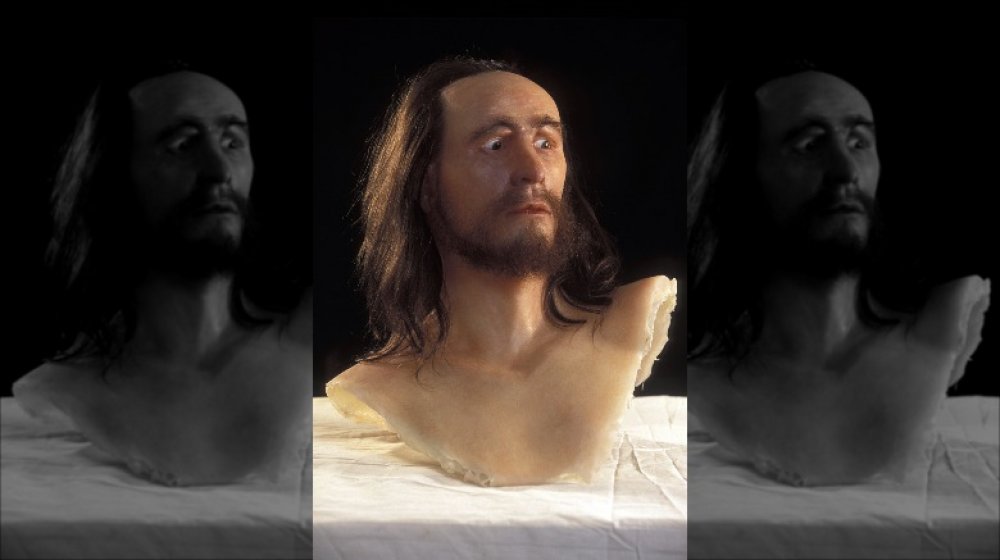What You Need To Know About The Iceman's Curse
High in the Ötztal Alps of Southern Austria, a muscular and heavily-tattooed man lay down in the snow, finally ready to die. He was likely in a lot of pain. He was probably deeply exhausted after losing a desperate fight to the death against several unknown attackers. And there he lay, crispy fresh and with a belly full of goat bacon (breakfast trivia courtesy of Phys.org), for the better part of 53 centuries. This individual's fatally bad luck became science's incredible good fortune when his remains were discovered in 1991, stunningly well-preserved and offering a treasure trove of insight into what life was like in the Neolithic Period.
After three decades or so of scientific poking and prodding, we know an almost uncomfortable amount about Otzi — as he would later be nicknamed in recognition of the fact that he bit his last bacon in the Ötztal Alps. As National Geographic reports, we know he had hardened arteries, worn joints, gallstones, parasitic worms, and frostbite. Oh, and he was dealing with a touch of arsenic poisoning, likely from working with metal ore. So it's probably fair to observe that his health wasn't optimal for battles to the death in subzero conditions. Astonishingly, we even know he has at least 19 living relatives, the closest of whom, Live Science reports, likely live in present-day Sardinia — land of tinned fish and cut-price housing.
The Iceman's curse
So what of this talk of curses?
Let's flashback to 1991, when the first team of scientists began their pokings and pryings into the life and death of the mysterious Iceman. According to The Independent, Rainer Henn, a forensic pathologist, was the first scientist to touch Otzi when he transferred his remains to a body-bag. Dr. Henn died in a head-on collision in 1992, en route to a conference where he planned to present his stunning findings (yes, including the thing about goat bacon). Shortly afterward, the mountaineer who helped Dr. Henn reach Otzi's remains would experience a fatal convergence of gravity and geology when a large rock fell on his head. Then the journalist who filmed Otzi's extraction died of a brain tumor.
So that's three deaths, with two of them probably cinematic enough to flesh out a decent first act, if Otzi's Curse were a B-grade horror movie.
The Iceman cometh
It gets "cursier." The Guardian reports that Helmut Simon, the man who first stumbled across Otzi's long-frozen visage, disappeared on a hike. He was later discovered at the base of a 300-foot tall cliff, leaving little doubt that his final few seconds involved rapid movement between two fixed geographical points on a vertical plane. Adding to the whole ancient curse vibe, Helmut reportedly died a bitter man, resentful that his find had not brought him rewards and acclaim. Then the man who helped find Helmut died while attending his funeral, and Konrad Spindler — the then-leading expert on the Iceman — also died suddenly. Speaking about the curse, Spindler is on record as saying: "I think it's a load of rubbish. It is all a media hype. The next thing you will be saying I will be next." Awkward.
Which brings us to the seventh and last known case of the Iceman's Curse (so far). In 2005, the scientist whose analysis of Otzi revealed so much about the doomed man's likely final moments was found dead in his home. The Independent article reports that the autopsy ... proved inconclusive.
If you weren't keeping count, that's a total of seven unusual deaths among people directly involved with Otzi. Given the scores of archaeologists, mountaineers, and journalists involved in studies of the Iceman over the years, Otzi's hit-rate isn't likely high enough to warrant full-blown panic. But maybe think twice if you're ever asked to participate in research involving goat bacon.


